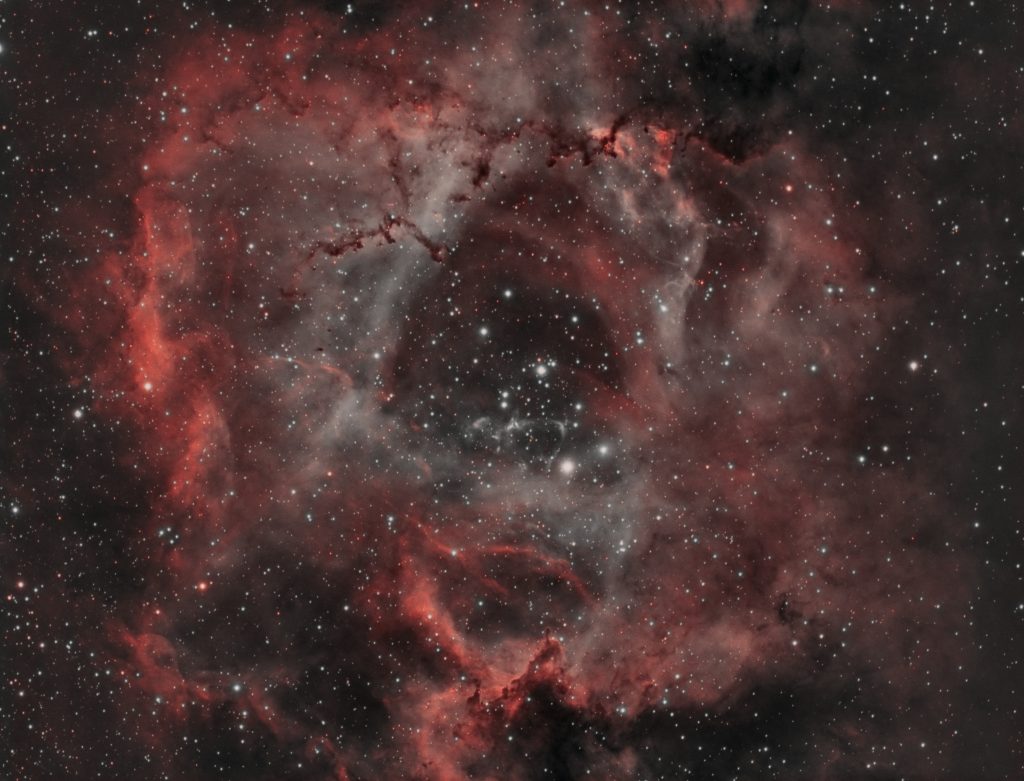The Rosette Nebula is a symmetrically-shaped region of ionized hydrogen (HII region) located at an edge of a huge molecular cloud in the constellation of Monoceros. More formally it is denoted as Caldwell 49, and also NGC 2237 (which also refers to a specific part of the nebula). The Rosette cannot be seen with the naked eye, but it is a popular target for amateur astrophotographers, and can be easily seen through binoculars or a low-power telescope. Inside the nebula an open cluster of relatively young stars has collectively pushed the material (through their solar winds) to create the ring that we see.
The Rosette is 5,000 light years away from us and around 130 light years across. It is a big stellar nursery and the most active star-forming region is on the right side of the right (on the photo below).
Data and processing: Goran Petrov
License: Creative Commons BY NC (free for non-commercial use, with attribution).
Click on the image to view in full size.
Location: Petralica, Rankovce, Macedonia
Date: 2016-12-08
Total integration time: 5 hours
Camera: ATIK One 9.0, cooled to -30C
Telescope: Takahashi FSQ 106 ED refractor
Filters:
Ha, SII, OIII: total of 30 x 10 min
Processed in PixInsight.
This photograph was made with the use of narrowband filters.
Narrowband Information was mapped to RGB (with a modified Hubble Palette).
Luminance information was synthetized from narrowband.
